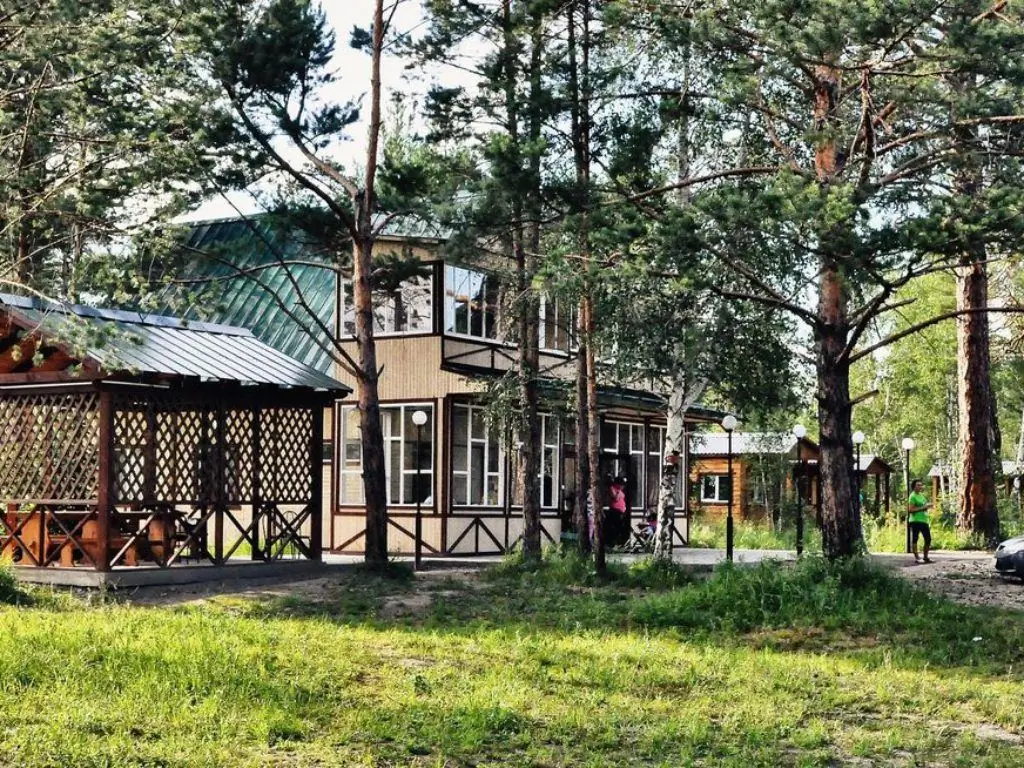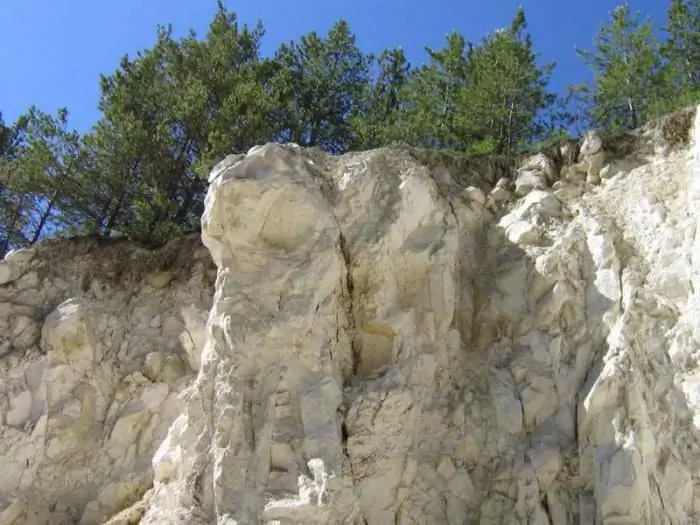- Author Harold Hamphrey [email protected].
- Public 2023-12-17 10:06.
- Last modified 2025-01-24 11:10.
Even in the middle of carefully built-up Europe, you can find a "piece" of wildlife - this is the Saxon Switzerland National Park.
Today, there are more than 2,000 national parks on the planet, located in 120 states. All of them are completely different. Some are very small, such as "Hamra" (Sweden), which occupies only 0.28 square meters. kilometers. And there are huge ones, like "Northeast Greenland", under which 972 thousand square meters are occupied.
But the most important thing that unites all these parks, their goal is to protect nature from dangerous human impact. People are allowed into such places, but under full control, in order to still preserve the natural heritage for posterity.
Germany and Europe
There are about 300 parks in Europe and 16 in Germany. And this is another proof that even with a high population density, it is possible to preserve wildlife oases.

Saxon Switzerland
This parkthe zone is located in Saxony, near Dresden (Germany). Occupied territory - 93.5 sq. kilometers. Here is a unique landscape, mostly mountainous, represented by Elbe sandstones.
It is believed that earlier on the site of the mountains there was a sea. At the end of the Cretaceous period, the sea receded, under the influence of wind and erosion processes, mountains were formed. Today, these are bizarre sand figures, dark gorges and narrow valleys.
The park was founded back in 1956, at that time the country had a program to restore and protect national natural areas. The official founding date is 1990.
At the beginning of the 20th century, millions of tourists came here, and the authorities had to restrict access to the park. There are areas here where visitors are not allowed at all.
Location
You can get to the park "Saxon Switzerland" by train, from the city of Dresden some 30 minutes on the way. The territory of the natural zone begins 15 kilometers from the border of the city, in a southeast direction.
The Germans call the city of Pirna the gates of the park, in which only 40 thousand people live. Most of the buildings in Pirna, like Dresden, were built from sandstone mined from the Elbe Mountains. The park area extends all the way to the border with the Czech Republic, where a similar park is located.

Plant and animal life
The most unique plants grow in "Saxon Switzerland". And where access for visitors is limited, in the eastern part, rare animals live, these are the marten, otter, kingfisher, dormouse andblack stork.
There are special ecological trails in the park. Where ordinary travelers can see snakes and vipers, deer and bats. Trout and salmon can be seen in the reservoirs.
There are many viewing platforms in the park, from where you can enjoy amazing views of the open spaces and unique nature.
Bastei Fortress
Most of the reviews about "Saxon Switzerland" are associated with the Bastei fortress. This castle is located at an altitude of 305 meters above sea level, on the right bank of the Elbe River. For the first time this fortress was mentioned in 1592. Already since 1800 tourists began to come here. The observation deck offers a view of the winding river bed and the Königstein fortress, the village of Reiten. If you are lucky and the weather is clear, you will be able to see the entire territory of the German part of the park.

Bridge
No less famous landmark of "Saxon Switzerland" - the Bastei Bridge. It has been popular for over 200 years. It was erected in 1824 from wood. After 2 years, the first trading tents appeared on the bridge. And in 1851 they carried out a complete reconstruction and built a sandstone bridge.
Artist Friedrich Kaspar immortalized this architectural creation on his canvas, and photographer Krone Herman left a commemorative plaque on one of the rocks of the bridge.
The path that runs along the bridge is called the “Path of Artists”. This is a 112 km road. With the increase in the number of tourists, protective fences appeared on the bridge, and a restaurant appeared instead of a hut.
The length of the Bastei bridge is 76.5 meters, it runs throughthe deepest gorge (40 meters).

Fortress
The Königstein Fortress in "Saxon Switzerland" is another popular destination. It is located on a rocky plateau, the height above sea level is 240 meters. In the middle of the castle grounds is the deepest well in all of Saxony. It also has the status of the second deep well in Europe.
The first mention of the building was found in the charter of King Wenceslas I (Czech Republic) dated 1233. At that time it belonged to the Czech kingdom. Due to its important commercial importance, the fortress was expanded. The castle was even visited by Peter I.
In 1459, the boundaries were already clearly defined, and the fortress passed into the possession of the Margraviate of Meissen (the border of the German Empire).
During the First and Second World Wars, the castle served as a place where prisoners of war were kept. The Dresden Art Gallery was also hidden here during World War II.
For visitors the doors of the fortress were opened in 1955. Now there is a military exposition, a restaurant and a souvenir shop.

Stolpen Castle
Arriving in the park, you should definitely visit this impregnable castle, which was built in the XII century. More precisely, it was cut down in a bas alt wall. The main problem for the builders was that they could not supply water to the castle. For a long 22 years, the miners tried to break through the well, and they still succeeded. For 1 day it was possible to break through the bas alt only by 1 centimeter. Previously, prisoners fromhigh-ranking estates. And one of the towers contained the favorite of August the Strong - Anna Kosel.
Climbing
The magnificent mountain landscape of "Saxon Switzerland" simply attracts climbers here like a magnet. However, at the beginning of the 20th century, special rules were introduced in the park for mountain lovers, which are aimed at preventing the destruction of sandstone. For example, the use of rings and ropes is possible only as insurance, but not for moving along the route. No other auxiliary means can be used on the territory of the Bastei Mountains, the same wedges and magnesia. All climbable mountains are equipped with safety hooks.

River, waterfall and tram
The Elbe river flows through the entire park, it has a winding course. To move to the other side, berths are equipped, from which motor ships, boats and old paddle steamers leave. It is from the water that a beautiful landscape opens up to the majestic mountains, and the slow movement of water transport allows you to enjoy the local beauties to the maximum and take great photos.
There are many excursions in the "Saxon Switzerland". So, from the city of Bad Schandau, you can take a mountain tram to the Lichtenhainer waterfall itself, although since 2010 only half the way, the rest will have to be walked.
Previously it was a small threshold. In 1830, a dam was erected on the stream, which is opened to release the accumulated water. Today the dam is opened every 30minutes, but only for 3 minutes.
In the park there is a unique tram line called Karnichtalbahn. This is a single-rail track, which has several sidings. The starting station is the city of Bad Schandau. The tram was launched in 2010, but due to frequent flooding, the line had to be shortened, and the trailers move along a shortened route - 7 kilometers. However, throughout these kilometers you can see half-timbered houses, picturesque rocks and the rapid flow of the river. Therefore, even riding a tram, not a single tourist will leave without a photo of "Saxon Switzerland".

Resort
Band-Shandau is not just a city on the border of the park and the Czech Republic, but a real modern resort. The first mentions date back to 1445, and already in 1467 the settlement received the status of a city. And since 1800 it has been an official resort. The city is famous not only for its hotels, but also for its own tram line. The main attraction of the city is the central square, where buildings from the Renaissance era have been preserved. There is a botanical garden here, where more than 1500 unique plants are collected.
Also in the city there is an "Ice Age Stone", on which there is an inscription that it is in this place that the ice cover of Scandinavia ends.
There are many rehabilitation clinics in the city, most of which specialize in orthopedics and the treatment of the skeletal and muscular system. There are sanatoriums specializing in cardiovascular diseases and other pathologies. Stars are frequent guests at Band-Shandau clinicsworld-class, in particular the favorite place is Elbresidenz. Movies have even been filmed in some hotels.

How to get there
"Saxon Switzerland" is located on the border of two states: Germany and the Czech Republic. If you go from Prague, the road will take 125 kilometers. If you leave Dresden, then only 30 kilometers.
If you drive from the Czech Republic, it is best to rent a car and drive along the E55 highway. Estimated travel time is 1 hour 20 minutes. If you get by public transport, then you should go to the city of Bad Schandrau or Rathen, where, in fact, you can stay. There are no direct trains in this direction, so you need to be prepared that you will have to make at least 1 transfer. From the city of Bad Schandau to the park, you still have to take a bus, and Rathen is located on the Albe River, and on the other side there is a park.
There is a rail connection between Dresden and Rathen, and the travel time is 30 minutes. The frequency of trains is every hour. Already in the city you can transfer to the ferry and get to the park.
Despite the fact that the purpose of the park is completely contrary to tourism, nevertheless, "Saxon Switzerland" is 400 kilometers of paths for pedestrians, while 75% of the territory is closed to the public. In addition, almost 50 kilometers are provided for cyclists, and 12,600 routes have been created for mountaineers.






